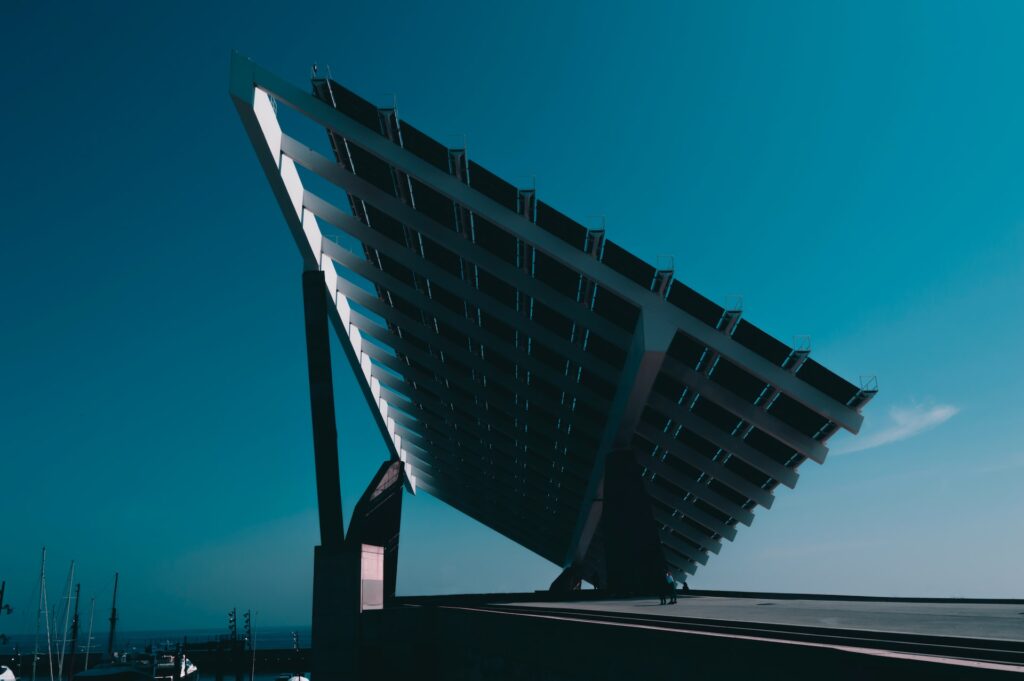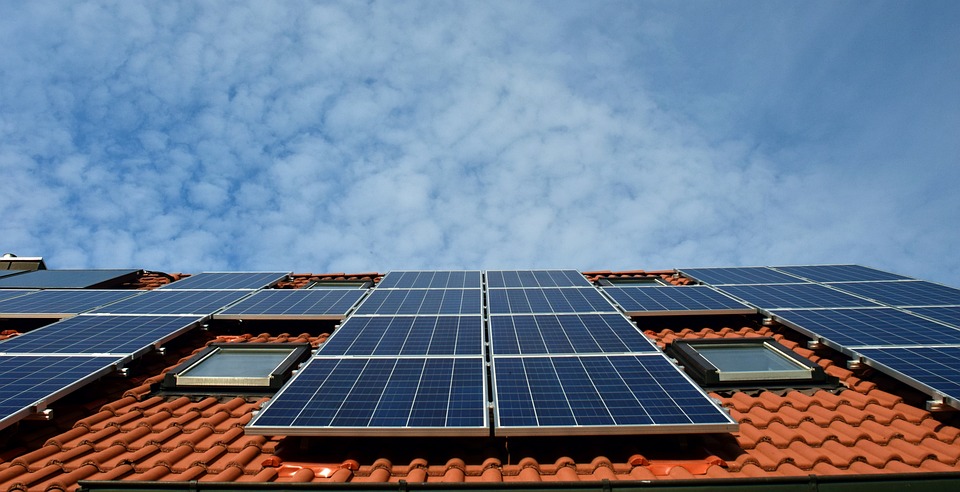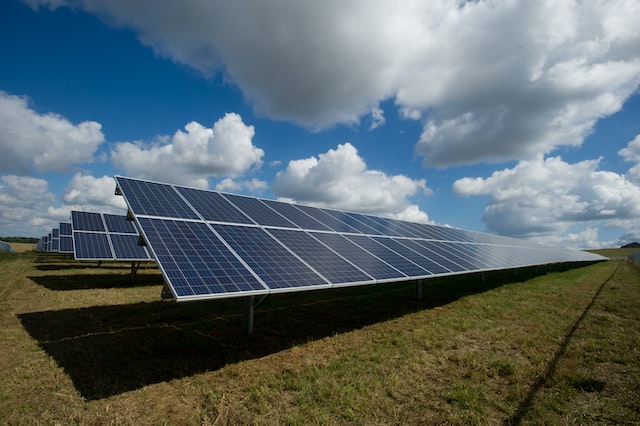When it comes to solar, potential buyers want to know how long their investment will last. Since investing in solar is a big decision, and most of us just don’t like it when things don’t age well, the question makes sense. And when it comes to technology, some things might have a long lifespan, but most will eventually wear out. Like any other technology, a panels lifespan is finite. But that doesn’t make them a bad investment — quite the contrary.
Keep reading to learn more about the solar power lifespan, what happens to them as time goes on, and what you can do to increase their life expectancy.
How Long Do Solar Panels Last?
Most solar manufacturers would say 25-30 years. Depending on usage and maintenance, they might even last longer. This isn’t to say that after a couple of decades the solar panels stop producing electricity—what it means is that the solar panels have a ‘useful life’ of 25-30 years on average, after which the energy production begins to decline, often due to their reduced capacity to absorb sunlight.
So, what exactly do we mean by a solar panel’s “useful life?” Useful life means that 99% of the panels are generating at least 70% of their power capacity. As time goes on, solar panels’ efficiency decreases and they produce less power than they used to. This phenomenon is described as “degradation.”
Due to solar panel degradation, solar panel warranties also change with time. For instance, most solar manufacturers will guarantee 90% power generation for the first ten years and then reduce the percentage to 80% for the next 10-20 years.
However, at Smart Solar Energy Co., we offer a 25-year warranty for our solar panel systems. We do this because we use the best German-engineered solar panels, which allows us to guarantee our panels will only decrease by 15% over 25 years. If your system produces below 85%, we’ll compensate you with cash.
Once the solar energy system’s useful life ends, it will still go on to produce electricity, albeit at a lower rate. This could be a reason why you may want to replace your solar panels in the future.

What’s the Deal With Solar Panel Degradation?
Simply put, solar panel degradation refers to the decreasing efficiency of solar panels over a period of time. The amount of sunlight they receive would be the same, but the energy output would be lower. The quantification of this power decay is known as the solar panel degradation rate.
You might wonder why this happens. The answer lies in the fact that solar panels are exposed to many external factors, such as harsh weather conditions, which cause an impact on their chemical potency. However, homeowners in the Pacific Northwest are lucky to experience little extreme weather, which means that solar panel degradation occurs much more gradually in Oregon, Washington, and Idaho than it does in places with extreme heat, like Arizona, Nevada, or Southern California.
The bulk of material used in solar cells is silicon. The silicon in the cells can experience microcracks, which will ultimately weaken the solar panels. The microcracks hamper the electrical connection, making it harder for the electrons from the sun to travel and provide energy to your home. Solar panels can also degrade if the junction box becomes detached or the PV cell surface gets discolored.
Solar panel degradation is typically caused due to weather conditions, but a lot of other factors can also contribute to it. Solar panels undergo rigorous testing for these factors, and the manufacturer determines their warranties based on these tests. The International Electrotechnical Commission (IEC) develops the international standards for all things related to electrotechnology. The three main tests for solar panels are: IEC 61215, IEC 61646, and IEC 62108. A few things that these tests include are the parameters for the aging of the PV modules, the degradation behavior of amorphous silicon, and the design qualification and type approval of concentrator photovoltaic (CPV) modules. The IEC certifications make certain that the solar panels being sold in the market are of high quality.
Even though buying from a trusted manufacturer will ensure that the solar panels perform well in the long run, eventual degradation is inevitable. And since there are so many factors due to which they may degrade, it can be hard to find a solution. The good news is, solar technology is constantly evolving and the manufacturers keep coming up with new innovations that could extend the life of solar panels. Investing in solar even today is a worthwhile investment, as the 25-year warranty that Smart Solar Energy Co. provides will most likely cover all weather-related damage. In addition to that, you will be informed beforehand of the expected degradation rate.
At Smart Solar Energy we offer a 25-year warranty for service and labor, along with a production guarantee for the same period, which ensures that if your system’s production output falls under 85% over a 25-year span, we will compensate you with cash. Can solar investment be any safer than that?
Understanding the Types and Causes of Solar Panel Degradation
Solar panels have a long life because they don’t have any moving parts. They are highly durable in nature and rarely break from within. However, they are not 100% immune to the outside forces, like weather. When solar panels undergo degradation, their energy output will reduce.
There are three major types of solar panel degradation:
- Light-induced degradation (LID): This degradation occurs in the first few hours after the panel is exposed to the sun. It is also called the ‘initial degradation’ or the ‘adjustment stage’ for the panel. The LID loss usually lies between 1% and 5%. To combat this problem, manufacturers try to use cells and production techniques that would allow lowest possible LID.
- Potential-induced degradation (PID): The PV modules can suffer a potential-induced performance degradation when there is potential difference between the photovoltaic cells and the ground. It is an undesirable phenomenon that can lead to a power loss up to 30%. Thankfully, there are PV module analysis techniques available that can help detect PID.
- Aging-related degradation: Being exposed to numerous external unavoidable factors, solar panels experience degradation as the PV modules age. The degradation is both visual (discoloration, delamination) and electrical.
Now that we have discussed the types of solar panel degradation, let us dive into the causes. The most common cause for solar panel deterioration is microcracks in solar cells. Due to thermal cycling – the process of cycling through two temperature extremes – the silicon in the cells may experience microcracks as the material contracts and expands. If these cracks are large enough in number, they may break the entire solar panel. This happens most frequently in extreme heat.

Another factor, called the dynamic mechanical load, can also cause damage to the solar panel. It is the flexing caused by strong winds and typhoons. Good quality solar panels will not be affected much by the DML, considering you have them installed by certified professionals.

Humidity can slow down the solar panel efficiency as tiny water droplets form a layer on the panel and reflect or refract sunlight away from it. Less sunlight means less power output. Consistent hot weather, like that in Florida, further accelerates the deterioration of solar panels. Similarly, snow can also contribute to the degradation as it can block off the sunlight. The long-term effect, however, is not all that significant.

You might be surprised to know that one of the causes of deterioration is the very thing that makes solar panels work – the sun! You heard that right.
The ultraviolet (UV) radiation from the sun deteriorates the polymeric encapsulates of PV modules. This shouldn’t be a concern if you’re buying high quality solar panels as they come with UV blockers for protection.
As we discussed earlier, LID occurs shortly after the panels are exposed to the sun and its UV radiation. It can result in a loss of up to 5%, but it slows down considerably after the first few hours.
Just like any piece of machinery, solar panels are bound to degrade. The only difference is that their lifespan far outpaces that of other equipment, making them one of the safest investments.
How Quickly Do Solar Panels Go Bad?
Not very quickly!
It is often considered a rule of thumb that solar panels degrade at a rate of 1% every year. However, a study by The National Renewable Energy Laboratory (NREL) performed a meta-analysis of nearly 2000 degradations and found the degradation rate to be less than 0.4% for panels using monocrystalline silicon produced after the year 2000. Even before 2000, the degradation rate was just 0.5% a year. In other words, a solar panel manufactured today should be producing 92% of the current power output 20 years down the line. That’s much more optimistic than the 80% estimated using the 1% rule.
The lower the degradation rate, the better the investment.
Most solar panels will likely exceed their performance warranties, depending on the conditions they are exposed to. The degradation rate is also directly influenced by the build quality of the solar panel. It may look expensive in the short-run, but choosing to install high-quality solar panels will prove to be a worthwhile investment in the long-run.
You can book a free solar audit with us to learn more about the number of solar panels required to fully power your home, the costs of installation, and the guarantees that will be provided to you.
Is It Possible to Extend the Life of Solar Panels?
Many homeowners are skeptical about investing in solar due to their concerns regarding the lifespan of the system. It is no secret that solar panels will degrade over time, just like a car or a computer does. Nevertheless, they are designed to be strong, sturdy, and durable.
Since there are no moving parts involved, they require little maintenance and the chances of physical damage are low as compared to other machinery. Even so, the wear and tear is inevitable.
So, what can you do to make the solar panels last longer?
- Choose a certified and professional solar installer – You should be certain that the solar provider you are teaming up with is a well-respected leader in the industry with a great track record. They should use high quality components for your system and provide great customer service. It is the smartest way to ensure that your system keeps producing desirable amounts of energy and exceeds its life expectancy.
- Location matters – If your panels are located at a place where they are exposed to constant debris, falling branches, or placed behind trees that cast shade, the solar output will decrease and the deterioration will quicken. Try to place them in an area where the chances of physical damage are less. A reputable solar dealer will ensure your solar panel placement is optimized for the longest possible lifespan.
- Regular monitoring – As the saying goes, prevention is better than cure. Regular monitoring can help bring issues to the forefront before they turn into a major problem. Inspect them for any damage – this includes thoroughly checking the wiring, components, and mounting rack. You can also have a professional examine your system to identify any issues that you may have missed. When you go solar with Smart Solar Energy Co., we provide 24/7 real-time monitoring to ensure your system is producing correctly.
- Keep your panels clean – Remove any debris, fallen leaves, snow, etc. that you see on your panels. Since the solar panels are made of glass, they don’t require any special treatment. You can wash them with soap and water, but take care that you don’t use abrasive cleaners. If you get on the roof, be careful since it can easily become slippery once you start cleaning.
What Happens Once the Useful Life of Solar Panels Is Over?
Once your solar panels reach the end of their warranty period (25 years with Smart Solar Energy Co.), they don’t stop producing electricity or become useless. The useful life of solar panels is said to end when their output falls below 70%. What this means is that they continue to produce energy, just at a lower efficiency level. Even at a lower efficiency level, you may not be required to replace your solar panels if they sufficiently fulfill your electricity needs.
Solar panel degradation is normal, and expected. Working with an established solar company will ensure that your panels are of high quality and covered under favorable warranty terms for at least 25 years. And you can expect to reach payback in as little as 5 years helping you save on electric bill increases!
Investing in solar is investing in the future of electricity. The rewards are much greater than the risks.
Thank you for reading our blog on how long do solar panels last.
To learn more about a federal solar tax credit and if you qualify, view our incentives page here.
Be sure to also read our other articles on residential solar and commercial solar. Ho




